Install the app
How to install the app on iOS
Follow along with the video below to see how to install our site as a web app on your home screen.

Note: this_feature_currently_requires_accessing_site_using_safari
You are using an out of date browser. It may not display this or other websites correctly.
You should upgrade or use an alternative browser.
You should upgrade or use an alternative browser.
OWNR Wallet
- Author OWNR_Affiliate
- Creation date
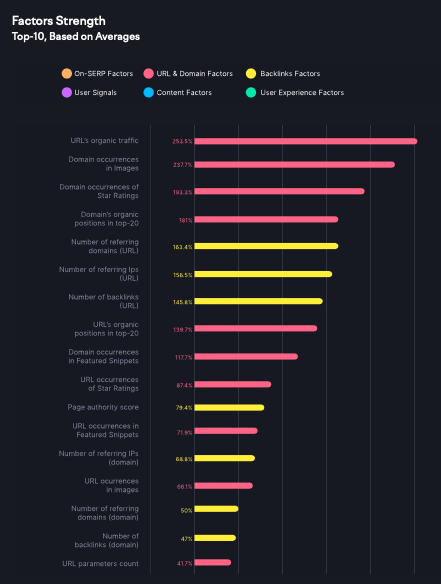
What factors influence Google rankings in 2024: what you should know?
The work of an SEO specialist often resembles that of a detective investigating a crime scene, trying to understand clues and predict patterns. The internet is filled with theories about what needs to be done to top the search results, but the harsh truth is that no one knows for sure.
After the leak of Yandex's code, SEO specialists had to reconsider their understanding of certain ranking factors and make corresponding adjustments to their strategies. Today, it's the turn of Google ranking factors: everything that Semrush specialists, the largest platform for SEO site audits, could find.
What factors influence Google rankings in 2024: what you should know?
The work of an SEO specialist often resembles that of a detective investigating a crime scene, trying to understand clues and predict patterns. The internet is filled with theories about what needs to be done to top the search results, but the harsh truth is that no one knows for sure. After the...telegra.ph
The compilation of the cheapest traffic sources
Invoices, proxies, expensive accounts, anti-detection browsers, cloaking, domains, and hundreds of dollars to test combinations or just creative ideas. It seems that to start in arbitrage, you need to invest several thousand dollars. Yes, if you go to expensive platforms. However, in arbitrage, you can use various traffic sources, some with a relatively low entry threshold. Let's discuss them in this article.
Native Networks
Native advertising is a format that blends with the content of a website. The ads resemble useful and interesting articles rather than traditional advertisements. In the settings of advertising campaigns, you can specify user interests, gender, age, location, and other preferences.
Through native networks, you can run campaigns with various advertising formats, including:
Some advertising networks also offer formats such as social bars, calendar ads, messenger-style notification ads, and others.
- Teasers
- PUSH notifications
- Banners
- Popunder/clickunder
- Native ads
In general, native networks allow advertising for any offers and products. For example, through a spy service, you can find ads for dating with nude girls, gambling, and betting.
When considering specific advertising networks, they have certain rules regarding the promotion of products. Some networks prohibit adult dating, allowing only mainstream dating. Others are more lenient towards all types of offers. We have compiled a list of advertising networks on a separate page, providing a brief description, main advantages, and features for arbitrageurs.
Spam
This type of advertising involves sending messages to users through private messages on social networks, messengers, group and channel comments, email, and other channels. The main difference from other traffic sources is that users do not want to receive such messages; they do not subscribe to these mailings. Despite users not expecting ads, spam remains an effective method of attracting traffic and customers.
To start, you need supplies: proxies, anti-detection browsers, accounts for a specific platform. Initially, you can manually send messages to earn your first income, but for scaling, automation programs are necessary.
Another way to attract traffic is to hire specialists who engage in spamming private messages and comments. For example, on the Zennolab forum, you can find relevant services, with costs starting from 1-2 rubles per message.
Spam can be applied to any platforms where messages and comments can be sent:
The main challenge with traffic injection is that large platforms have anti-spam filters and algorithms, while smaller sites and apps manually moderate content. For instance, users may report an ad message, and a moderator will review and block the violator within 5-10 minutes.
- Telegram
- VKontakte
- Odnoklassniki
- Niche platforms (e.g., VC)
- Dating sites and apps
- Forums
- And others
Read more: https://telegra.ph/The-compilation-of-t ... rces-01-09


Why can't you improve your Facebook advertising performance?
Reddit user WizardOfEcommerce shared their experience of running $20 million worth of Facebook ads. His post received a massive number of likes, prompting him to write a follow-up about common mistakes made when launching ad campaigns.
Read the article: Why can't you improve your Facebook advertising performance?

Social Media Trends: What to Expect in 2024?
Welcome to the world of social media, where trends change faster than conspiracy theories. New popular platforms emerge, new ways of making purchases are introduced, and countless algorithm updates keep marketers and business owners on their toes. This is enough to make even the most seasoned professionals dizzy. This article is an excellent way to stop obsessively checking apps for the hottest new social media trends—we've gathered them all for you.
Read more: Social Media Trends: What to Expect in 2024?

Telegram, Seeding, and ADS for Traffic Arbitrage. What you need to know and how to achieve results?
According to Inclient data, in 2023, Telegram is visited by 800 million people per month. It ranks in the top 5 most popular messengers globally by audience size. However, not many use it as a money-making tool. Today, we will rectify that. The Partnerkin editorial team will repeat and analyze the peculiarities of working with Telegram, seedings, and ADS for you.
Read more: https://telegra.ph/Telegram-Seeding...need-to-know-and-how-to-achieve-results-12-05
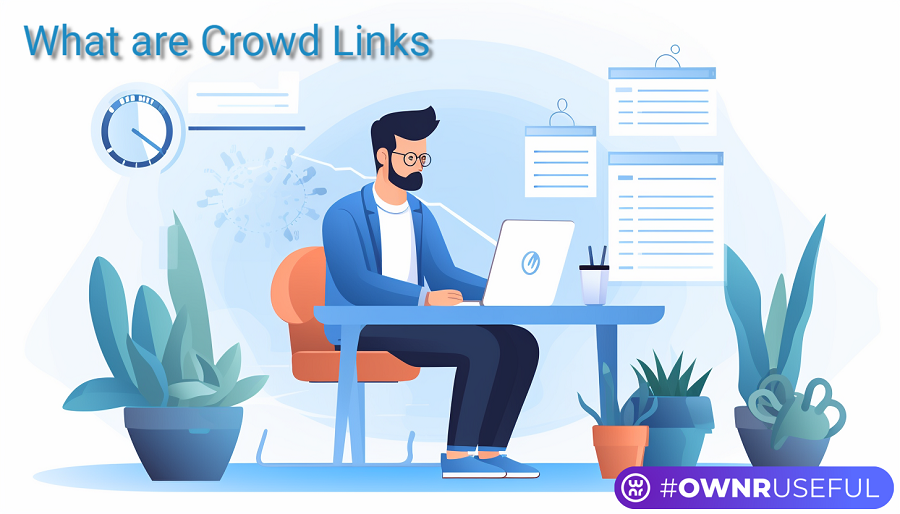
What are Crowd Links and Where to Place Them?
The use of links is fundamental to SEO promotion, and one of the tools in this arsenal is crowd links. Through crowd links, not only can a website increase its link mass and boost traffic, but it can also stimulate demand for specific products or services, enhance brand recognition, and improve overall perception. In this article, you will discover what crowd links are, who can benefit from this promotion method, and where to acquire and place them.
Read more: https://telegra.ph/What-are-Crowd-Links ... Them-12-01

The Wow Effect in Creatives and Advertising Campaigns: What It Is and How to Achieve It
Today, traditional advertising fails to impress many. Competition is skyrocketing, along with the information overload for internet users. Banner blindness is increasingly taking the spotlight, making it challenging to promote even high-quality and essential products.
Therefore, the need for the wow effect arises. It is a special advertising technique aimed at establishing a strong emotional connection with the audience. The mission of the wow effect is to surprise, delight, and make a lasting impression.
In this article, we will delve into what the wow effect is, how to incorporate it into your advertising campaign and creatives, and discuss ideas to make customers queue up and enthusiastically talk about your advertisement. The ability to amaze is a valuable skill for arbitrators, so we recommend reading to the end!
Read more: https://telegra.ph/The-Wow-Effect-in-Cr ... e-It-11-16
Facebook will use AI to block fake accounts
We've found an interesting piece of information regarding Facebook's efforts to combat fake accounts. Below is the material from a potential Facebook employee. It's important to note that we can't confirm whether an actual Facebook employee wrote this, but we don't believe anyone would impersonate them and write about their issues with auto-generated Facebook accounts, including statistics. Additionally, the material contains highlights from a presentation, which is why we paid attention to it.
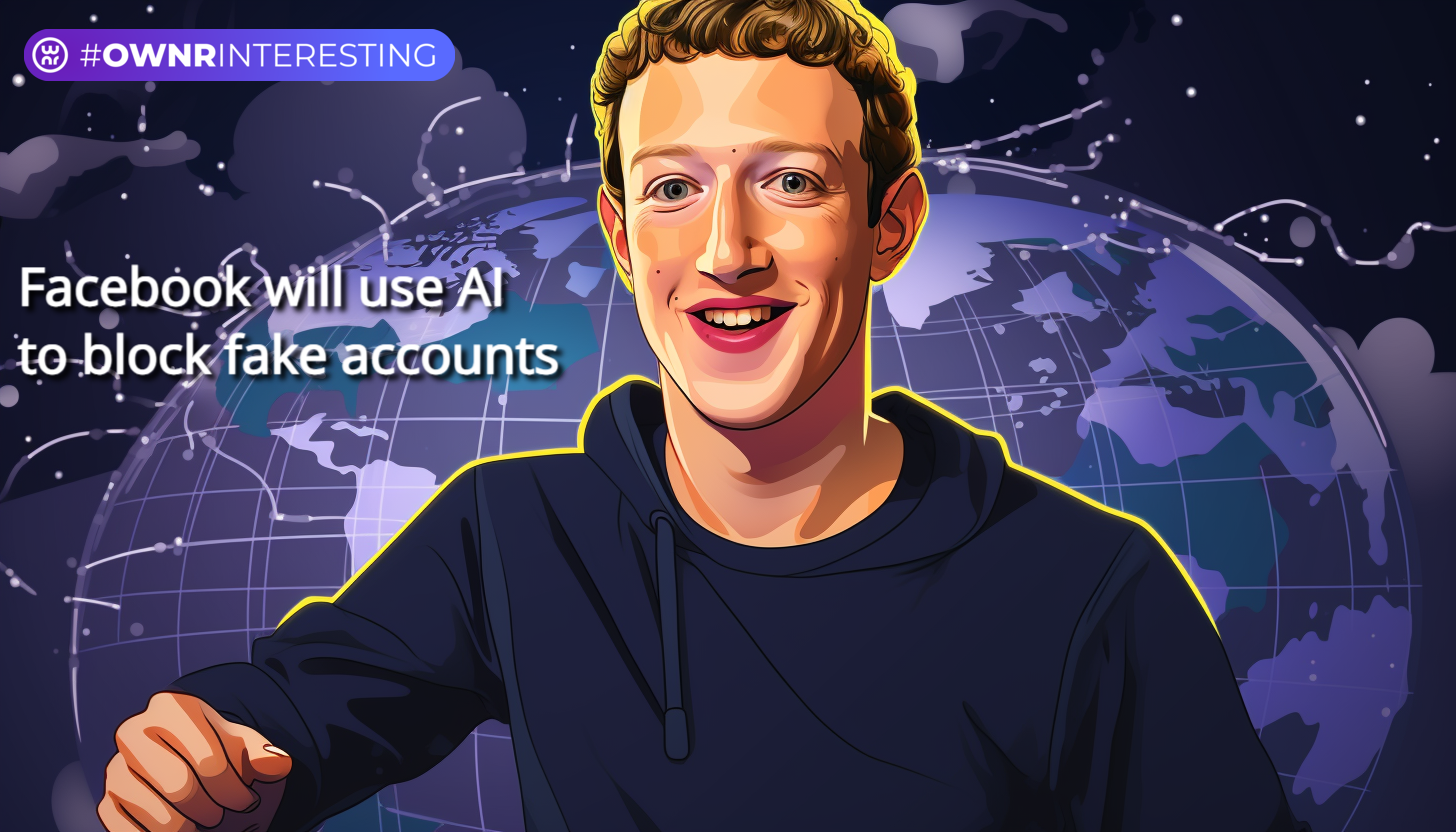
Original material:
Key account parameters used by Facebook
Account age: A young account can be more prone to abuse.
Number of friends: Some bots may have an unusually large number of friends.
Account Location: Accounts registered in certain regions may be more prone to abuse.
Analysis of an account’s behavior on a social network, such as how often the account posts, comments or likes other users’ posts.
Interaction network analysis: Facebook analyzes who an account interacts with on the social network and identifies unusual networks of connections between accounts.
The operating system of the device from which the account was registered.
Information about the IP addresses from which the account was registered.
Group Membership: Accounts that belong to certain groups may be more prone to abuse.
Analysis of content posted on account pages.
Analysis of activity on the site as a whole, such as how much time the user spends on the site, what pages they view, etc.
Aggregating features such as the average number of groups per friend or the percentage of accounts in a particular region can help reveal patterns associated with account abuse.
Full transcript of the speech
Thank you all. My name is Sarah Kodir and I am a software engineer at Facebook. I’m working on the Deep Entity Classification (DEC) model, which is one of our main models for detecting malicious accounts. Unfortunately, there are people who benefit both financially and personally by engaging in harmful activities. For example, they will spam, deceive people, distribute malware, and worst of all, exploit children and spread terrorism. But to do this, you need a fake account.
To understand the extent of the problem, let’s take a look at our Q1 2019 report. We removed 2.2 billion fake accounts in the first three months of 2019. And while that’s a huge number, we still estimate that around 5% of our monthly active users are fake. This is a fight we have been waging for many years. We delete them and they come back with even more volume and we delete them again. This is an endless game of cat and mouse.
So what are the approaches to solve this problem? We can ask people to view accounts. But on Facebook, we have a complex system for ensuring the quality of markup. But on such a huge platform, where tens of millions of users sign up every day and there are billions of existing accounts, it’s impossible to quickly view all of these accounts manually. Another approach is to write manual rules to detect attacks. But in this case, we have to write thousands of rules, and attackers can respond to them quickly, perhaps even faster than we can write them.
Given the nature of the problem, the obvious solution is to use machine learning. Let’s see how we would traditionally approach this from a machine learning perspective. First, we’ll compile a number of characteristics, such as the age of the account, the number of friends it has, or its location. Then we will connect these signs with a label whether this account is malicious or not. We will then take this training data and feed it into a model, such as gradient-increasing decision trees or a neural network. The output of this model is whether this account is malicious or not?
While machine learning is a great solution, we still have some problems. Let’s say we’re doing some research and realize that the younger the account, the more malicious it is likely to be. We create a new feature, account age, and insert it into our classifier. So let’s implement a classifier. Malefactors begin to realize that their accounts are blocked. And they just age their accounts before they start abusing. And in this way they can bypass our systems. However, Deck can handle it. We not only mine direct attributes of an account, but we also mine and aggregate attributes for other accounts it interacts with. This allows us not only to model the account itself, but also its behavior across the social network.
Another problem with traditional machine learning is that the number of features humans can write is usually limited. When we have a small number of signs, it is much easier for attackers to figure out what exactly these signs are. However, Deck is recursive in nature and we get tens of thousands of features for every single account. This is much more difficult for attackers to understand.
From August to October, accounts were being created poorly, and there was a significant increase in bans. In some regions, the ban rate reached 95%, whereas with the same expenses, it had never been above 30% before. Taking a selfie also became more challenging. Out of the batch with a 95% ban rate, only about 15% passed the 1500+ account mark with selfies. This indicates the introduction of new algorithms that need to be addressed. On the one hand, the material mentioned that this is for countering terrorism rather than dealing with gray advertising, so it might be premature to panic. However, it is a sign that Facebook is moving toward more account suspensions.
Sklik - an advertising network with Czech traffic. How to advertise on it
OWNR WalletNovember 01, 2023
Are you looking for an alternative to Google and international advertising networks? We've found a purely Czech advertising network that offers advertising on major Czech online magazines and news sites and in the local search engine Seznam. It's called Sklik.cz.
In this article, you will learn why it's worth considering this source of traffic, its advantages and disadvantages, and why it may not be suitable for everyone.
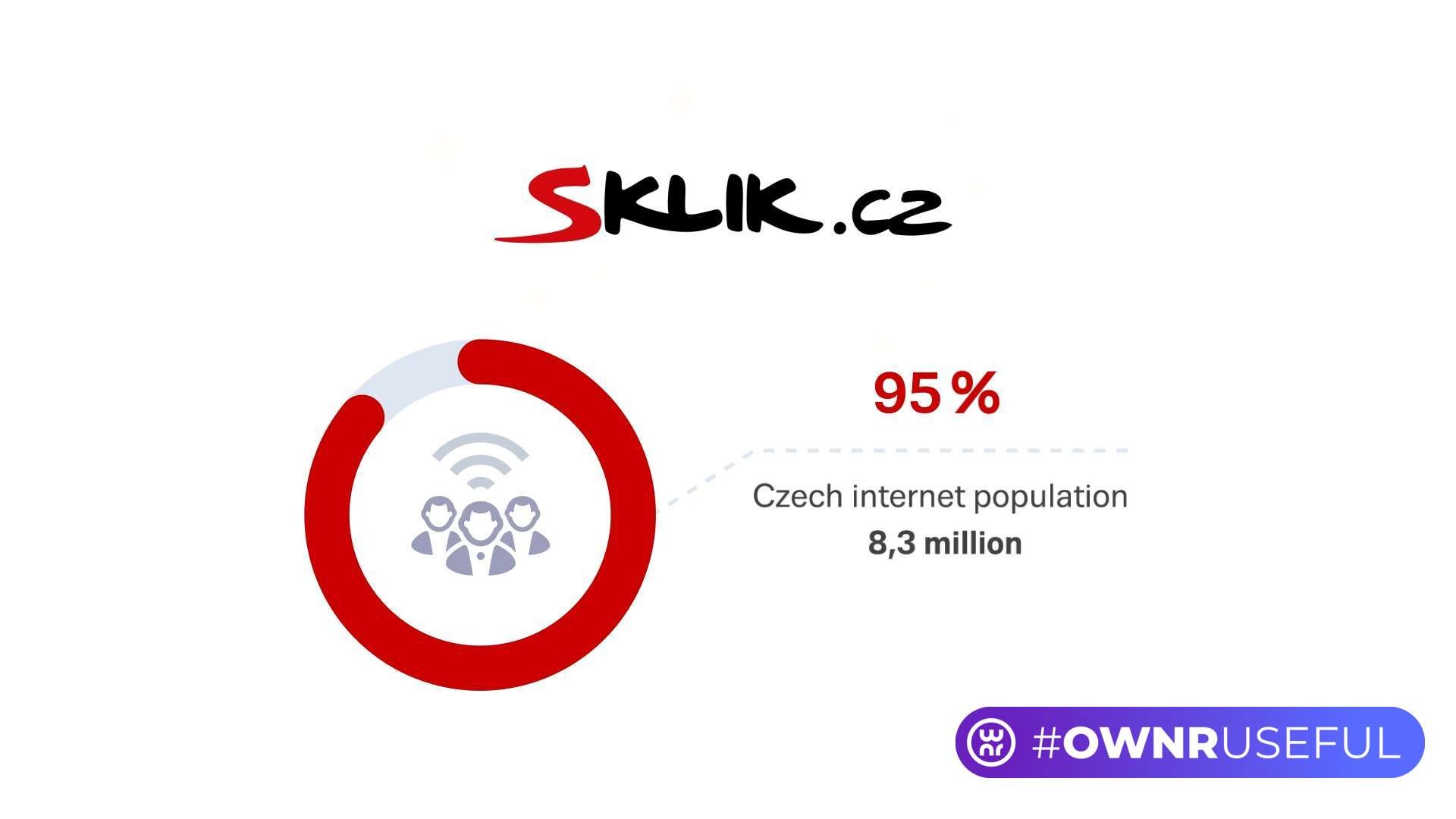
What is Sklik and what does it offer?
Sklik is an advertising network with Czech traffic. It will be of interest to advertisers who:
Let's delve deeper into PPC and native advertising in Sklik.
- Deal with PPC traffic.
- Purchase native advertising on major resources.
PPC traffic in Seznam
Through the network, you can run PPC campaigns in Seznam, a purely Czech search engine. According to the search engine itself, users enter 15 million queries into Seznam every day.
Here is the statistics from 2015 to 2023. Seznam is the second-largest after Google.
The advertising in Seznam looks similar to Google search: the first results are occupied by advertising listings with the corresponding label.
If you promote products through an online store, they will also appear in search results.
Native advertising on Czech websites
The second way to promote in Sklik is through native advertising. It is placed on major Czech resources, of which there are 18 in total. Among them are celebrity magazines, women's magazines, men's magazines, two news sites, a portal for music, sports, weather forecasts, and others.
Advertising placements can be in various positions on the page.
In addition to native advertising, Sklik offers other advertising formats, such as branding, banners in different locations on websites, and video advertising.
Why advertise in Sklik?
Advertising is placed on the largest websites in the Czech Republic. The network provides statistics for each individual resource and describes its theme, so you know exactly where you are advertising. We mentioned the website themes earlier, and with this knowledge, you can reach a wide audience.
Czech traffic only. This is a local advertising network, and competition among arbitrageurs is always lower in such networks. This is because cooperation with such networks involves paying VAT and operating legally. Moreover, not many arbitrageurs are familiar with these networks; they tend to focus on international solutions like Taboola, PropellerAds, RichAds, and others.
Fast support. We sent more than five emails to their support, and they responded in less than an hour. The authors of the article "Comparison of PPC campaigns in a real example" also described Sklik's support as "more human" compared to Google's support.
Cooperation with Sklik involves constant communication with account managers. For example, we asked for advice on running a successful advertising campaign and listing common mistakes made by advertisers, but we were directed to contact their support.
The support is in Czech, and you can only reach them by calling a Czech number.
Importing campaigns from Google Ads is available. This is convenient for those who work with Google and want to try a new traffic source.
Detailed targeting settings. In the targeting options, you can specify age, gender, city, interests, and device type (smartphones/PC).
The network offers two payment models: CPC and CPT. CPT is the same as CPM. Which one to choose is always an individual decision, and there's no definitive answer.
Requirements for advertisers
Before launching a campaign, you will be required to provide an IC (Identification Code). We asked the support team what specifically to provide: the IC of the affiliate program you're working with as an arbitrator, or your own as a "sole proprietor" in the Czech Republic. The support responded as follows:
ID is the identification number of a legal entity. Enter the identification number under which you registered as an entrepreneur in the Department of Trade Licensing.
The alias you see in your profile has nothing to do with the company name.
The company's official name is stated in your business license; for individuals, it is usually your name and surname. You can choose a well-known name under which you represent yourself in the market if it differs from the official business name stated in the trade license.
Before running ads, you will be asked to upload documents confirming that your product complies with the requirements of the advertising network.
Top Services for Checking Website Adaptability
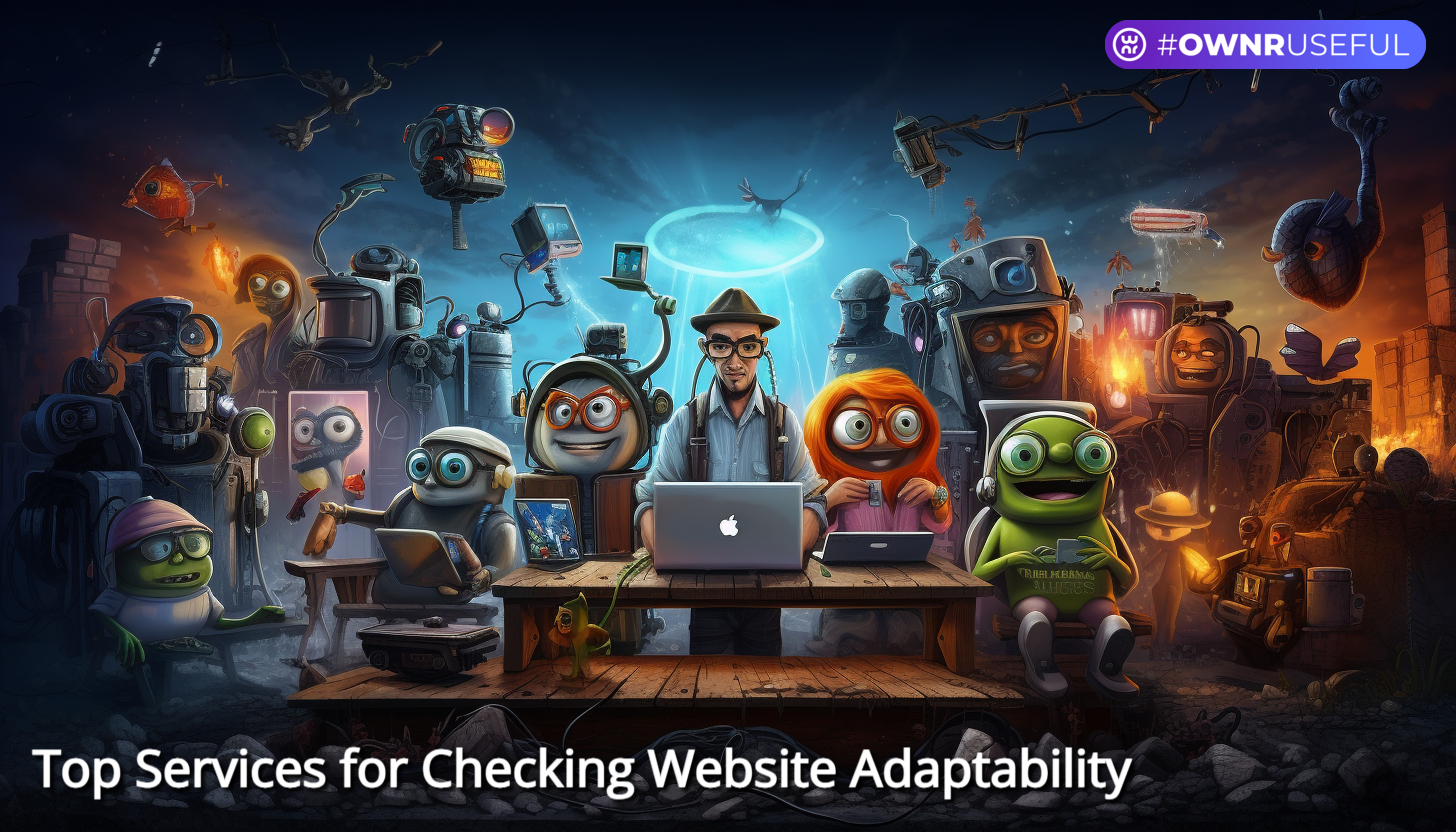
Bing
This service checks how a website appears on Android and Windows-based devices. In addition to assessing user-friendliness and loading speed, it evaluates your site based on the following parameters:
The service is free to use; simply enter your website's URL in the provided field and click the "Analyze" button.
- Window view settings
- Matching screen size with images and textual content
- Text readability
- Size and usability of links and buttons
Mobile-Friendly Test
A free service for assessing website adaptability by Google. It conducts optimization checks for smartphones using the Googlebot robot, which provides instant, concise results. You can view a screenshot of how your site looks on a smartphone and access detailed results by clicking "more." The service identifies issues with loading, content display, and offers recommendations for resolution.
Adaptivator
This resource checks website adaptability on various mobile and tablet models, including Nexia, Samsung, Lumia, iPhone, and others. You can preview how your site will appear in both horizontal and vertical orientations. During the check, you can review web pages, images, and the usability of all elements.
Screenfly
A free English-language service for assessing website adaptability. Users can see how their website will appear on computers, smartphones, tablets, and even Smart TVs. It offers a selection of over 30 different device models. Users can adjust the screen perspective, set custom sizes, and disable scrolling. After testing, you can share a link with the results.
Browserling
This service allows you to conduct cross-browser and cross-platform testing for website adaptability on various devices. It offers a wide range of browsers and operating systems. There is a free version with a time limit of up to 3 minutes, suitable for Windows 10, Chrome, and Edge with a screen resolution of 1024x768.
The resource offers two paid plans:
- Developer plan, priced at $19. With this plan, you can conduct unlimited time tests on any browser and OS, and customize screen resolutions. It also allows for local testing and screenshot capture.
- Team plan, starting at $29. This plan offers the same features as the developer plan and provides simultaneous access for a group of individuals.
I Love Adaptive
This service offers free adaptability checks and provides a wide selection of device models and operating systems, along with customizable screen sizes. Additionally, you can assess page loading speed, validate HTML code, and compare various resources. By installing a Google extension, you can even check sites that restrict content display.
These services are valuable tools for ensuring that your website is adapted for different devices and operating systems, ultimately enhancing user experience and engagement.


